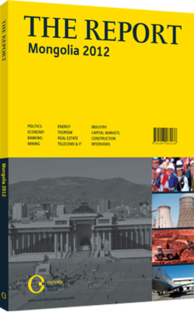Added support: Secondary services firms are expected to benefit from future growth
Mining is not as labour-intensive as most other economic activities. Although the mining sector is expected to propel Mongolia’s economy forward in leaps, it is not forecast to be a major driver of employment. In the mining services niche, however, it is anticipated that many of the country’s small-scale entrepreneurs and small and medium-sized enterprises (SMEs) will find plenty of opportunities to participate. In 2011 there were around 45,000 workers in the mining sector as a whole, which is equal to around 5% of the total workforce, according to statistics from the Ministry of Social Welfare and Labour. Local media reported that the mining sector could create 40,000 jobs in the next five years.
SOLID POTENTIAL: With just 27% of the country thoroughly surveyed, it is difficult to generate a reliable estimate of the size of any future market for mining services. As of late 2011 the real potential moving forward was more than $1bn, according to Eric Mac, whose company, V-Performance, holds the rights to sell Volvo trucks and industrial equipment in Mongolia. The long line of mining services billboards lining the road from the airport to the capital’s central business district is an intangible measure of additional interest. Services companies are clearly ready to meet customer needs. “Big mining projects are still in development phase, in 2012 and beyond mines will move to the production phase and we expect demand for mining equipment to increase dramatically,” said Steve Potter, the general director of Wagner Asia. “Our order books are already booked through the end of 2012.” As of late 2011 the market was dominated by Chinese-made equipment, which is cheaper and easier to acquire than many Western brands, according to Mac. Products imported from Western countries satisfy about 15-20% of the market. Smaller-scale services firms – such as entrepreneurs who might lease a few trucks or have specialised pieces of equipment to rent out – are expected to continue to rely on Chinese products due to the lower cost.
CHALLENGING CIRCUMSTANCES: One of the problems equipment providers face is the potential for import delays. Processing goods through Mongolian Customs requires importers to deal with numerous government agencies instead of just one. Often goods end up sitting for several weeks in warehouses around the capital before they are released and able to be deployed. As of late 2011 there were no regulations in place for procurement, said G. Temuulen, the deputy director of Erdenes MGL, the state mining company.
Additionally, some of Mongolia’s largest conglomerates are looking to open mining divisions, which bodes well for mining services firms. Major mining companies are likely to seek comprehensive service deals from contractors. For example, in November 2011 Monnis International, a local firm, announced a strategic alliance with Dumas Mine Contracting, a Canadian services company, to provide a range of services, including technical assistance at mines, safety systems and logistics.
HURDLES: Logistical concerns are certain to be an ongoing challenge, at least until the existing transport links are improved upon. For example, the winner of a contract to supply drinking water to Oyu Tolgoi (OT), the copper and gold mine that is one of the centrepieces of the sector, will be required to provide 7-8 tonnes of it on a daily basis, according to research from the Ulaanbaatar office of Eurasia Capital, an international investment bank.
Thus far, the services sector has relied on foreign labour. For example, at the OT mine, which is currently under construction, migrant workers account for a substantial percentage of the staff. The foreign firms operating the mine, Rio Tinto and Ivanhoe Mines, however, have agreed to use 90% local workers once production commences. Rio Tinto told OBG that the firm plans to spend $85m on training programmes in Mongolia by 2015. Some mining companies choose to hire a subcontractor to provide labour. One of the main providers is Central Asia Mine Logistics, which is the first and largest mining subcontractor in the country. The firm trains workers to use technical mining equipment, such as diamond drillers and other machinery.
You have reached the limit of premium articles you can view for free.
Choose from the options below to purchase print or digital editions of our Reports. You can also purchase a website subscription giving you unlimited access to all of our Reports online for 12 months.
If you have already purchased this Report or have a website subscription, please login to continue.

